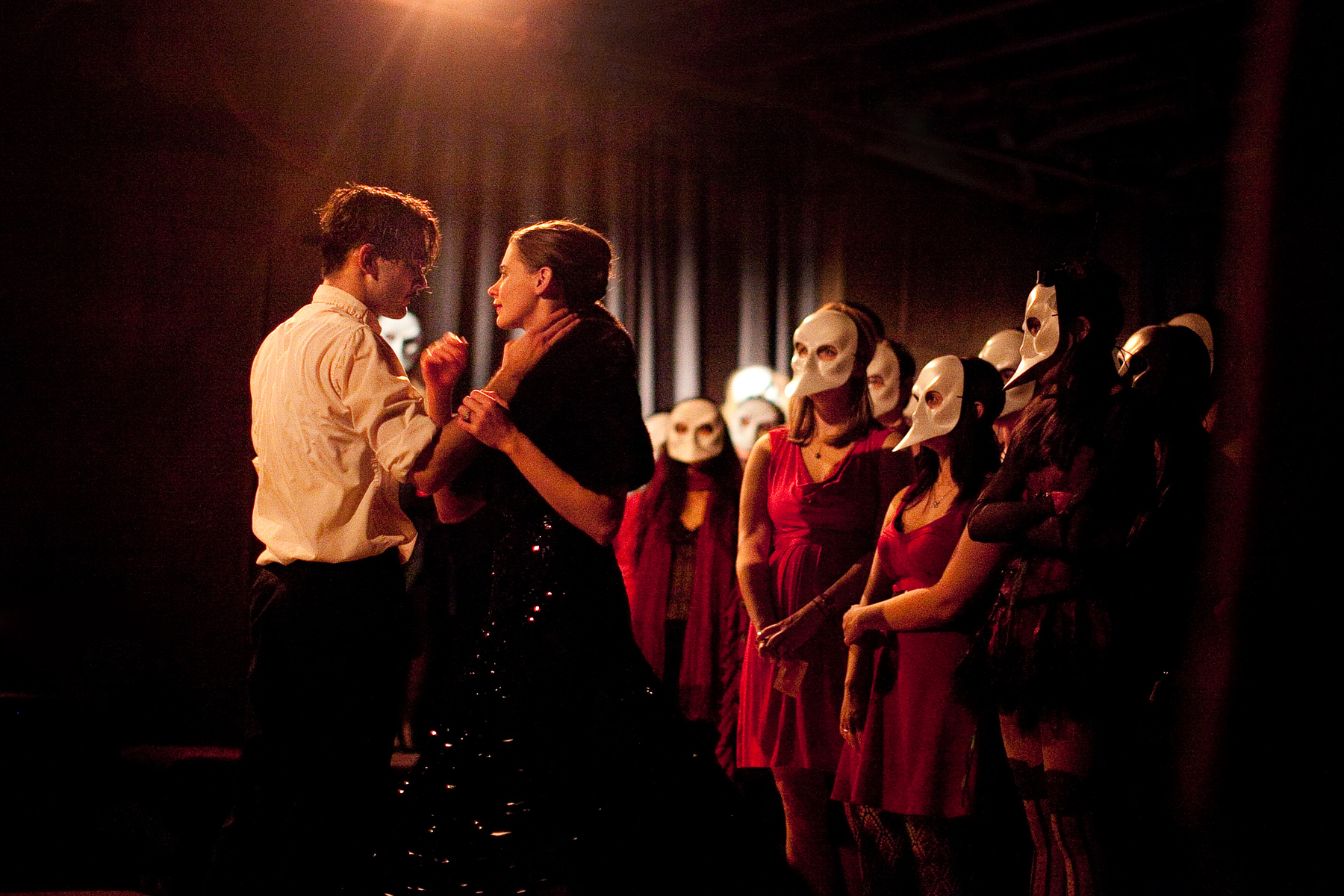Sleep No More and the Discourses of Shakespeare Performance
I had already seen Sleep No More eleven times before I saw the beginning of Sleep No More. That’s not the sort of admission you’d expect from a theatre scholar who has actually written a book about a particular performance. But, in fact, my Cambridge Element about Sleep No More was in the final stages of the publication process before I even learned that there was a beginning of sorts to Sleep No More.
Sleep No More is a famous immersive dance theatre adaptation of Shakespeare’s Macbeth.[1] I spent more than a decade attending and researching Sleep No More. Distributed over 100,000 square feet of a six-story venue, the performances that make up Sleep No More happen simultaneously throughout this expansive space — it’s like a play by Shakespeare performed by dancers in an Alfred Hitchcock-themed haunted house. It’s impossible to see all of Sleep No More in a single evening. So, I attended multiple times over many years. One night, standing in line before being admitted to the show, I struck up a conversation with some Sleep No More superfans — that’s when I learned that most of the characters appear in one location (the ballroom in the basement) at the very start of the three-hour long performance, and most of the superfans (and there are many) go there. Taking the advice of the superfans, I arrived very early for my twelfth visit to Sleep No More, and I headed to the ballroom immediately… I was not disappointed.
My Element, Sleep No More and the Discourses of Shakespeare Performance (Cambridge, January 2024), takes spectatorship at immersive theatre very seriously. This mini-monograph is the product of twelve years of attending, researching, thinking about, and writing about one specific immersive theatre production. Studying Sleep No More presented distinct challenges, and I feel that these challenges reflect the conditions of immersive theatre research in general. I suppose you could say that these challenges are just exaggerated versions of the challenges faced by anyone writing about theatre. Writing about theatre is always hard because — like a ghost — a performance isn’t there any more when you write about it; nor is it there later when somebody else reads about it. And yet, immersive theatre is even more challenging to write about than other forms of theatre because the performance tends to be elusive even when you are “there.” Large-scale performance environments like Sleep No More simply cannot be seen in their entirety a single “viewing,” or even several. As a result, immersive theatre fieldwork presents challenges not experienced with attendance at conventional theatres. Of course, what I’ve been calling “challenges” might also be called affordances, obstacles, problematics, or even pleasures.

See for yourself… Check out Sleep No More and the Discourses of Shakespeare Performance. Available online and in print from Cambridge Elements. Follow the link for immediate access or to order a hard copy.
[1] Sleep No More was created by the British company Punchdrunk, directed by Felix Barrett (Punchdrunk’s founder and Artistic Director) and choreographed by Maxine Doyle. The New York City production of Sleep No More premiered in 2011, with previous iterations in London and Boston. When I began writing this article, Sleep No More was performing in New York City and Shanghai. At the time of writing, Sleep No More NYC is scheduled to close in February of 2024.
______________________________________________________________________________________
Photo credit: Yaniv Schulman





